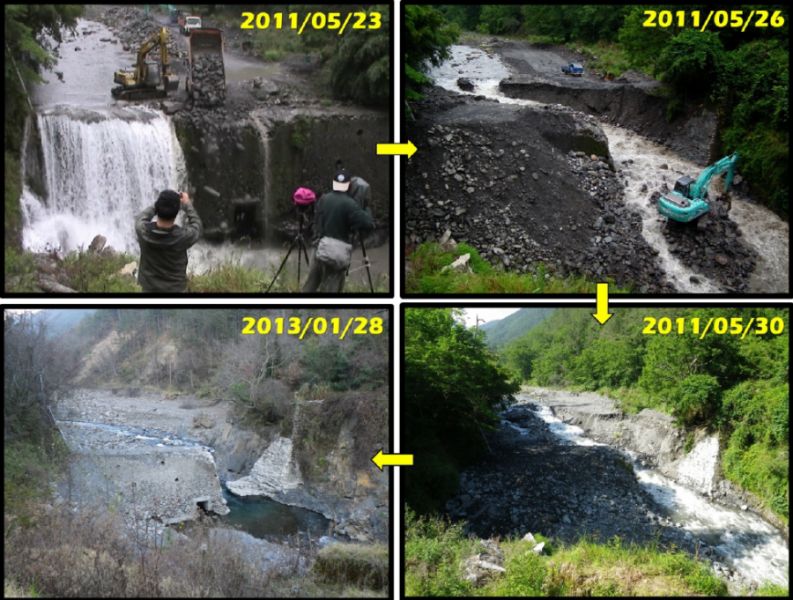生態農業:氣候變遷下以自然為本之濕地碳匯復育策略【生命科學系/林幸助特聘教授】
| 論文篇名 | 英文:Long-term response of trophic structure and function to dam removal in a subtropical mountain stream 中文:亞熱帶高山溪流食物網營養結構與生態功能對於拆壩之長期反應 |
| 期刊名稱 | Ecological Indicators |
| 發表年份,卷數,起迄頁數 | 2023, 156: 111136 |
| 作者 | Lin, An-Cheng; Lin, Hsing-Juh(林幸助)* |
| DOI | 10.1016/j.ecolind.2023.111136 |
| 中文摘要 | 雖然拆壩被認為是緩解溪流棲地破碎化的可行策略,但很少討論拆壩的長期生態系統影響。為了增強極度瀕危的臺灣櫻花鉤吻鮭(Oncorhynchus masou formosanus)應對氣候變化的復原力,七家灣溪中一座15米高的攔砂壩被拆除了一半。本研究旨在通過構建不同時間拆壩上下游的食物網模式,分析營養結構和功能對拆壩的長期反應。我們於拆壩前1年、拆壩後1年和2年(短期)以及拆壩後7年和8年(長期)進行了完整的季節週期的模式參數實地調查。上游和下游溪段在拆壩後都走向成熟。在拆壩後短期內,更多的能量可以在食物網中進一步向上轉移。兩個系統的活力和多樣性也有所增加。從拆壩後長期來看,雖然兩個系統的能量傳輸效率總體呈下降趨勢,但韌性有所增強。與上游系統相比,拆壩對下游系統的影響更為明顯。在下游溪段中,拆壩增強了臺灣櫻花鉤吻鮭的活力,從而增強了自上而下的控制。碎屑流量之的主導地位在食物網中也轉向了藻食流量。因此,下游系統更加成熟,食物網的聯繫更加緊密。上下游系統的生態系統屬性漸趨一致,顯示拆壩8年後上下游系統差異消失,生態廊道終於形成。 |
| 英文摘要 | Although dam removal has been considered a viable strategy to mitigate habitat fragmentation within a stream, long-term ecosystem effects after dam removal have rarely been discussed. In an effort to enhance the resilience of the critically endangered Formosan salmon (Oncorhynchus masou formosanus) in response to climate change, a 15-m-high check dam in a subtropical high-mountain stream was half-removed. The aim of this study was to analyze the long-term response of trophic structure and function to dam removal by constructing Ecopath models upstream and downstream of the removed dam at different times. Field surveys for model parameters were conducted for a complete seasonal cycle 1 year before dam removal, 1 and 2 years (short-term) after dam removal and 7 and 8 years (long-term) after dam removal. Both upstream and downstream systems moved toward maturity after dam removal. In the short term after dam removal, more energy can be transferred further up in the food webs. The vitality and diversity of both systems also increased. In the long term after dam removal, although the transfer efficiencies of both systems generally showed a decreasing pattern, the resilience increased. Compared to the upstream system, the effects of dam removal on the downstream system were more evident. In the downstream system, dam removal enhanced the vitality of the Formosan salmon and thus the top-down control. The dominance of detritivory flow in the food web also shifted toward the dominance of herbivory flow. Consequently, the downstream system reached more maturity, and the food web was more closely linked. The ecosystem attributes of the upstream and downstream systems converged, suggesting that the decoupling between upstream and downstream systems resulting from damming disappeared 8 years after dam removal. |
| 發表成果與本中心研究主題相關性 | 溪流濕地生態復育 |







